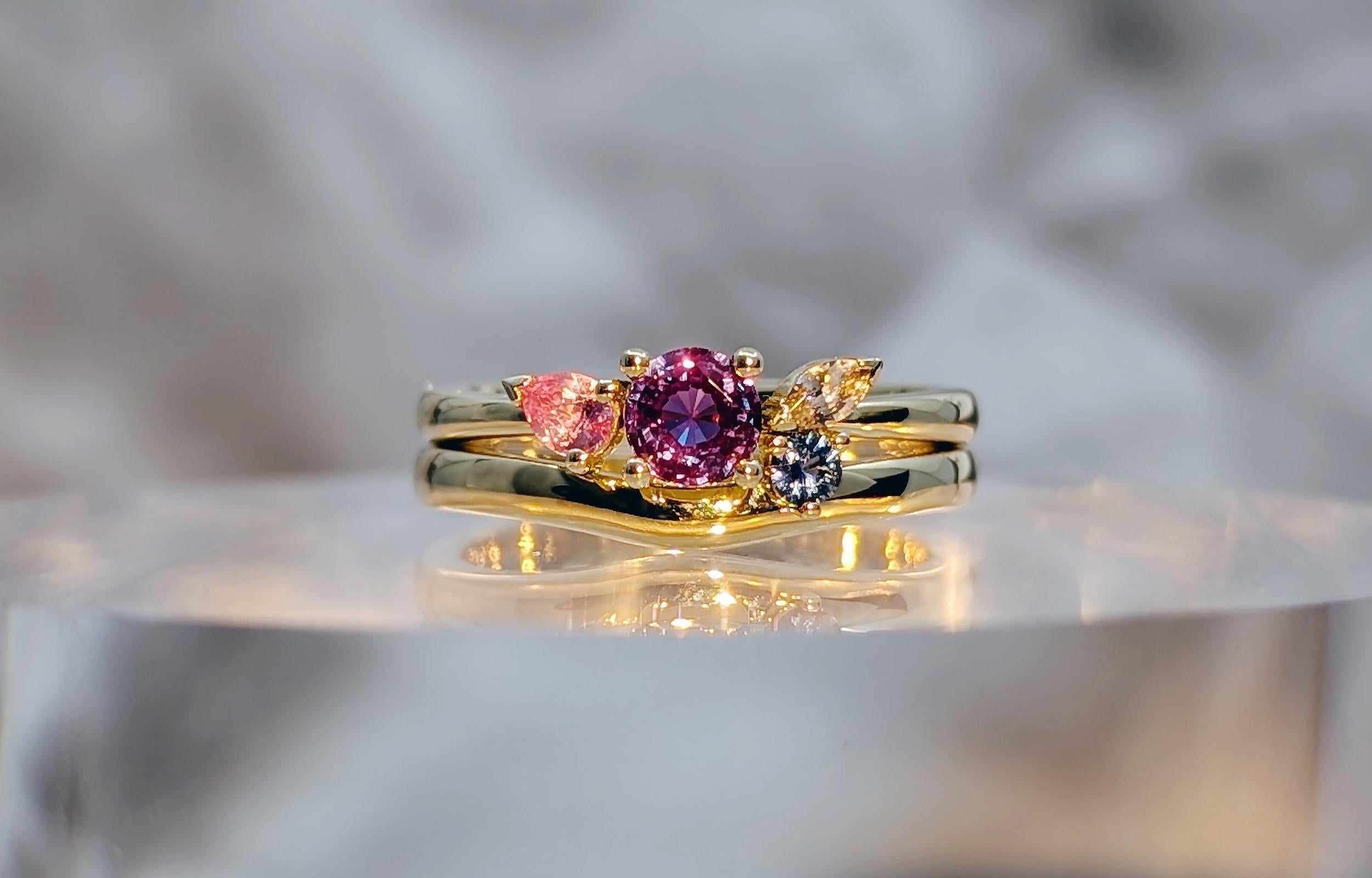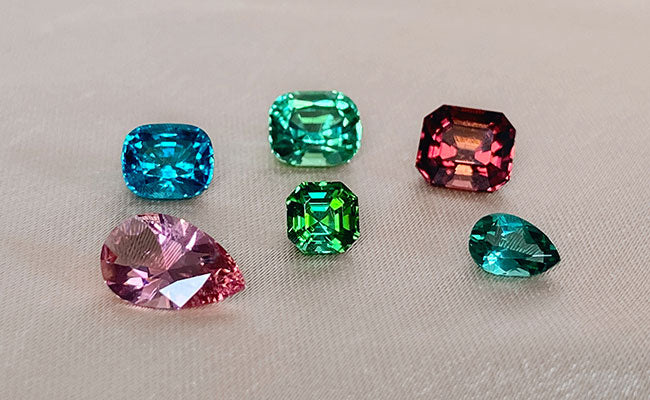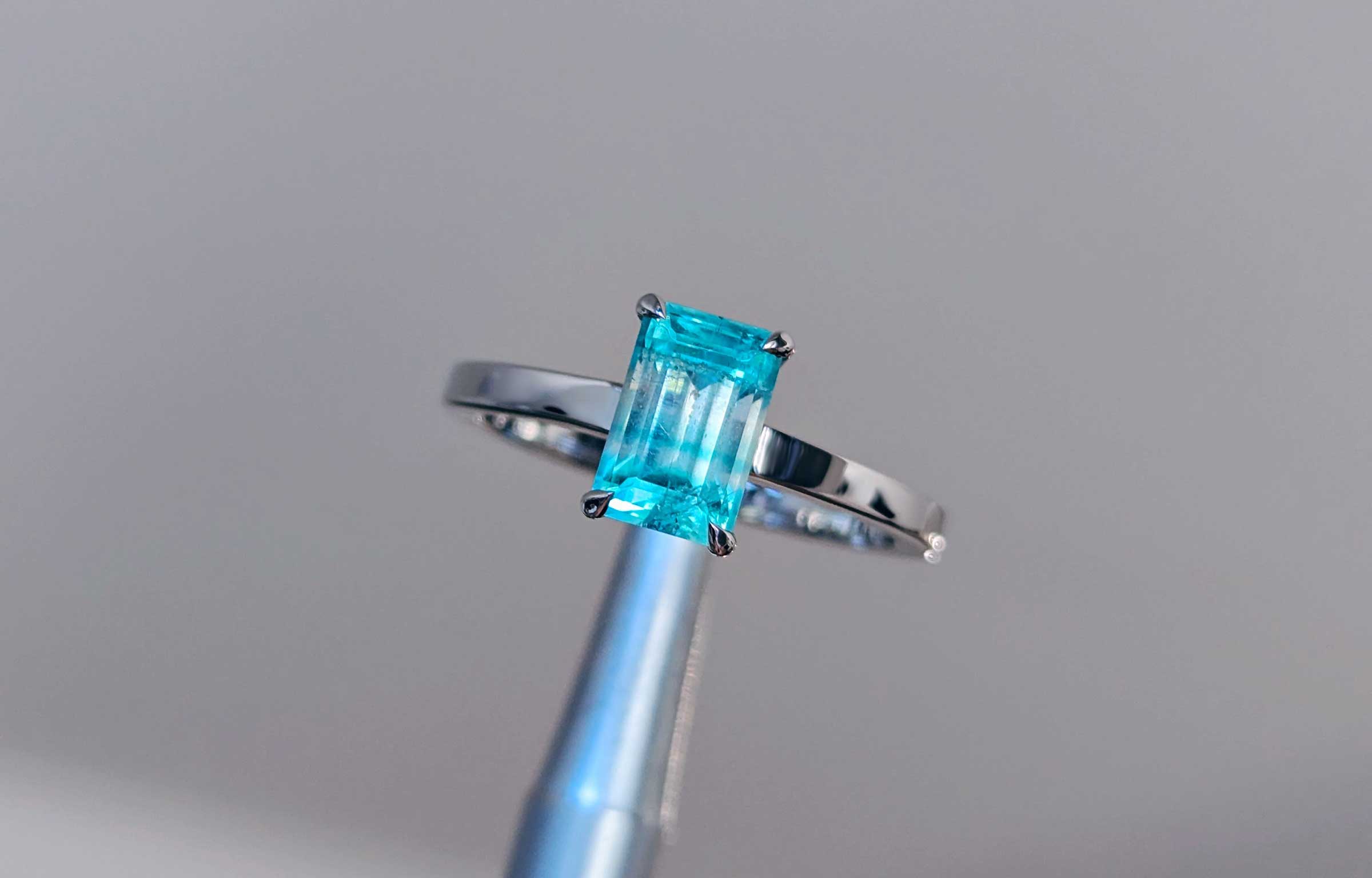
Alexandrite: The colour changing June birthstone you’ve never heard of
Ever heard of alexandrite?
If you haven't, don't worry. You're not alone. Of the three official June birthstones - pearl, moonstone and alexandrite - it's the least known and the most interesting by far.
Alexandrite is a rare colour changing gem that's as distinctive as the people who fall in love with it. In daylight, it's blue to green. In incandescent light, it's red to purple.
Think of it like a shape shifter in gem form. The kind of stone you choose when you don't want what everyone else is having. Alexandrite is one of those hidden gems with a cult following among collectors, gemmologists and jewellery lovers in the know.
Key takeaways:
- What is alexandrite?
- Why is alexandrite the underdog June birthstone?
- Why alexandrite lovers are a different breed (and how you can find yours)
- Alexandrite FAQs: Your June birthstone questions answered
What is alexandrite?
Alexandrite is a variety of chrysoberyl that changes colour depending on the light. This shift is caused by the way it absorbs and reflects certain wavelengths. But you don't need to be a gemmologist to appreciate it. You'll know the magic the moment the light hits.
Discovered in the 1830s in Russia's Ural Mountains, alexandrite was initially mistaken for emerald. But when the stones were brought indoors and viewed under candlelight, their colour shifted from green to red. That’s when it became clear this was no ordinary gem.
Today, natural alexandrite is one of the most prized and hard-to-find gems on the planet. A fine quality natural alexandrite, with high clarity and strong colour change, can fetch higher prices per carat than diamond.
Due to their rarity, many alexandrites on the market are lab created. Lab created alexandrites offer the same chemical makeup and colour change effect, but are more readily available. If you're after a natural alexandrite, be sure to work with a reputable jeweller who can guide you through the sourcing process.

Why is alexandrite the underdog June birthstone?
Alexandrite doesn't get the same attention as diamonds or sapphires, despite being significantly more elusive. And that's exactly why we love it. It's a hidden gem in both rarity and recognition.
But you might be wondering: Why would I choose alexandrite over the other June birthstones, pearl and moonstone?
While pearls and moonstones are beautiful in their own right, there are many reasons to love an alexandrite.
Here's why it stands out:
- It's rare: Natural alexandrite is incredibly hard to find, making it a one-of-a-kind choice for anyone who values individuality.
- It's durable: With a hardness of 8.5 on the Mohs Hardness Scale, it's more durable than both pearl and moonstone.
- It actually changes colour: Green by day and burgundy by night, alexandrite is a chameleon in gem form. No filters. No illusions. Just nature at its finest.
So if you want a gemstone that's unexpected, expressive and a little bit magical, alexandrite is the choice for those who colour outside the lines.


Why alexandrite lovers are a different breed (and how you can find yours)
You don't "accidentally" pick an alexandrite. You discover it. You obsess over it. And then you can't stop thinking about it.
At Fairina Cheng, we know how rare "rare" really is. We work with trusted gemstone suppliers to source alexandrites when they become available. Sometimes it takes months. And when a particularly beautiful stone comes along, we let our waitlist know, because they don't last long.
Book a design consult to enquire about your own wild and wonderful alexandrite. Because when the right stone shows up, you'll want to be ready.

Alexandrite FAQs: Your June birthstone questions answered
Curious about alexandrite? You're not the only one. Here are some of the most frequently asked questions about this colour changing gem.
- What is June's birthstone?
- Why does June have three birthstones?
- What does alexandrite symbolise?
- Is alexandrite the birthstone for Gemini?
- What other gemstones can change colour like alexandrite?
What is June's birthstone?
June has three official birthstones: pearl, moonstone and alexandrite.
Pearl is the most traditional of the three. It's an organic gemstone formed in oysters and molluscs, known for its classic elegance. No cutting or polishing needed. Pearls come straight from nature with a beauty all their own.
Moonstone is a gem of mystery. It has a soft, milky appearance and a glow-like effect known as adularescence - that shimmer you see when the light hits it just right.
Alexandrite is the rarest of the three, and the most dramatic. Known for its colour change, it's bold, complex and a favourite for those who want something truly different. Each has its own charm, but if you're drawn to something rare and distinctive, alexandrite is the standout.

Why does June have three birthstones?
Because one size doesn't fit all. Originally, birthstones were linked to ancient traditions, with gems that varied depending on where in the world you were. Over time, jeweller associations stepped in to offer a wider range of choices, styles and price points.
That's why months like June now have multiple birthstones. Whether you're drawn to something rare and bold, or timeless and classic, having more than one option means you can choose the gem that actually feels like you.
What does alexandrite symbolise?
Alexandrite is associated with change, intuition and self-expression. Whether or not you follow gemstone symbolism, there's something fitting about a stone that refuses to be just one thing.
Is alexandrite the birthstone for Gemini?
Alexandrite is officially June's birthstone. But if you're a Gemini (born between May 21 and June 20), you might feel a natural connection. Known for adaptability, curiosity and a dual nature, Gemini is a sign that thrives in contrast (much like alexandrite, with its dramatic shifts from green to red). So while it's not technically Gemini's birthstone, it's a beautifully fitting match in more ways than one.
What other gemstones can change colour like alexandrite?
Alexandrite isn't the only gemstone with colour changing abilities. Others include sapphire, garnet, spinel and colour change diaspore (also known as Zultanite). These stones can either "change" or "shift" in colour, depending on how they react to light.
A colour change is a dramatic shift in hue under different types of light, for example alexandrite turning green in daylight and purple under incandescent light. A colour shift is more subtle, with slight variations in tone depending on the lighting conditions.
There's also pleochroism, where a gemstone appears to show different colours from different angles under the same light source. Alexandrite is one of the rare few gems that can do both!
Book a custom jewellery consult to find your perfect gem.



